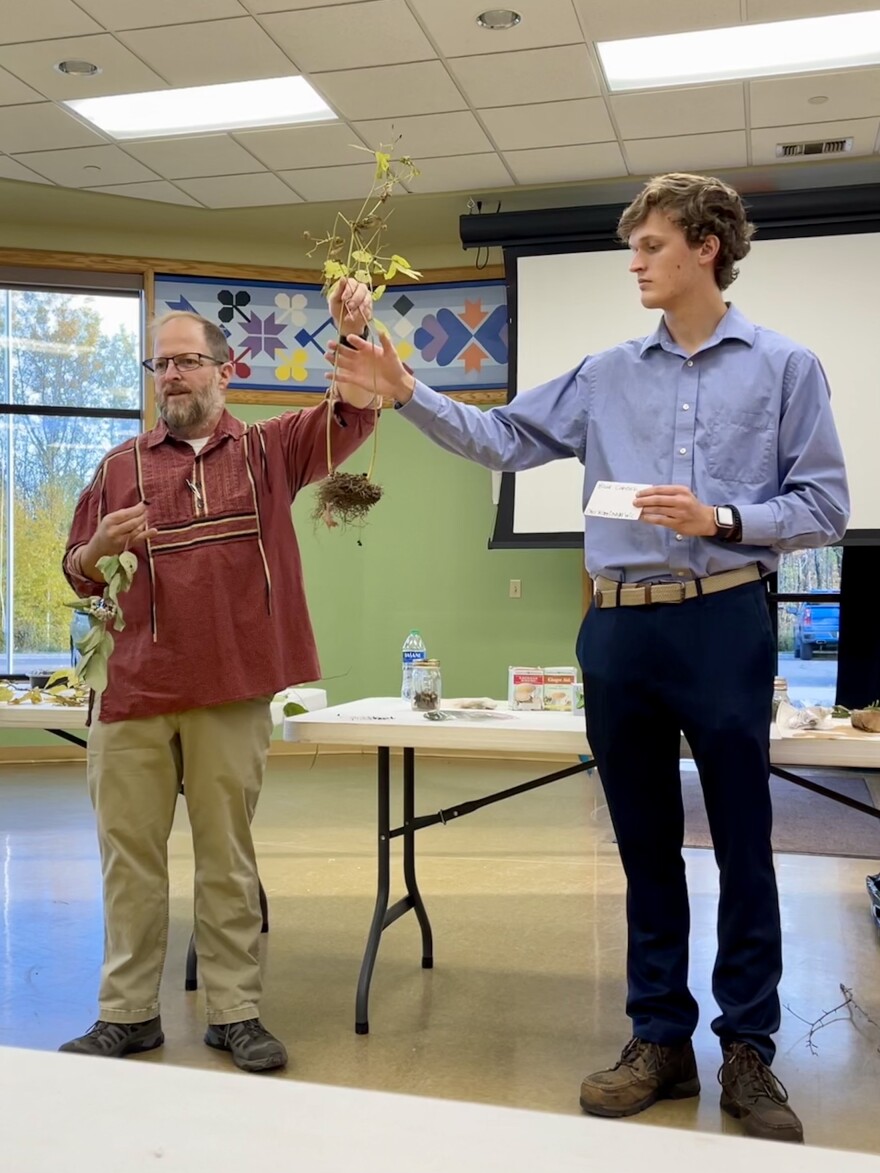Earlier this week, the Forest County Potawatomi Culture Center and Museum held a Medicine Workshop for identifying medical and edible plants.
The workshop focused on building plant identification skills.
After revered elder Jim Thunder, Senior, passed away, botanist Dr. David Foster and traditional ecological knowledge coordinator Richard Gouge knew they had to do something.
This is Richard Gouge-
“Growing up, we had elders that would take us out into the woods and have us pick some medicines and stuff, kind of explain to us what they were. Since then, you know, we've been kind of losing our elders that did that for us. So this is very, very important for us to try to learn this again,” he explained.
In a walk that was only a little over a mile long, the experts identified 77 species with Potawatomi names.
They gathered samples and shared them with the workshop.
“It's good to go and work with people who know it. You would be just as dead eating randomly in the forest as you would eating out of your neighbor's medicine cabinet,” said Dr. Foster.
In the workshop, Dr. Foster highlighted the many medical uses of local plants.
For example, he said that the source for the top ovarian and breast cancer treatments, Taxol and Tamoxifen, is found right here in Forest County.
He also showed us how to harvest edible parts from common plants, like cattails.
At one point, he held up three different types of berries.
“Do we have a volunteer who's brave? Come on up. What's your name? All right, you've got three choices. You've got these dark blue ones like this. Okay. You've got these white berries. Like this. And you've got this red berry right here. Okay, these are the three and one of them will kill you. One will make you wish you were dead. And the other one is really tasty. Which one would you choose?”
The volunteer chose the red berries, which happened to be cranberries, meaning she survived!
The white berries were red osier dogwood berries.
The blue ones were from the blue cohosh.
Dr. Foster explained the uses for blue cohosh berries.
“But this plant right here is used to ease birthing. It has an alkaloidal compound as specific as Pitocin for the smooth muscle of the uterine wall and a little bit will help the child along… a larger dose was used as an abortifacient. In an overdose it’ll turn the uterus inside out and rip it in half, causing hemorrhaging to death,” explained Dr. Foster.
Richard Gouge hopes that the workshop will spark interest from younger and older folks alike.
He hopes that people will be able to go into the woods and treat any issue they have.
For WXPR News, I’m Hannah Davis-Reid, in Forest County.










